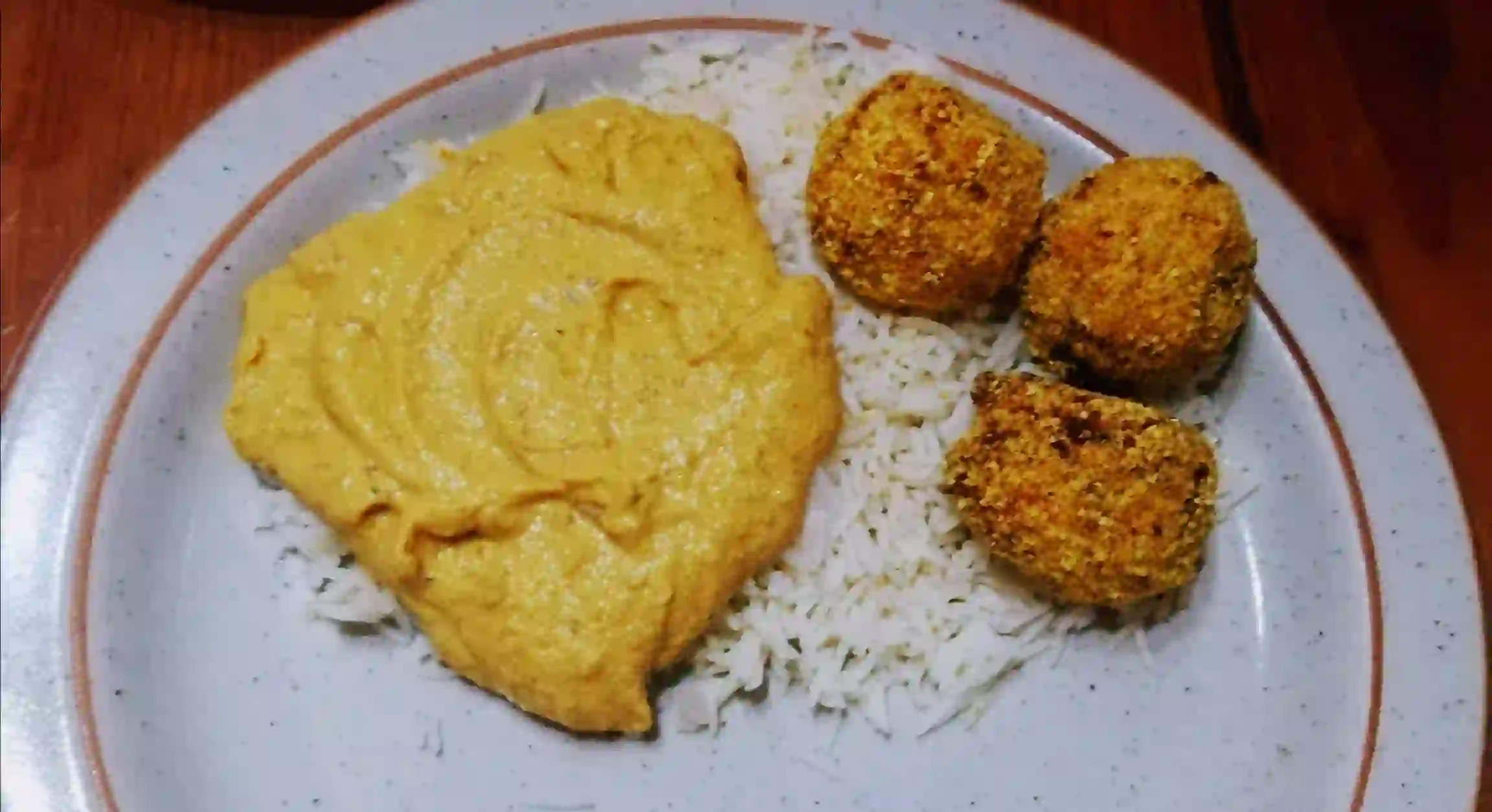Carrot and Cauliflower Dumplings with Korma Sauce
Time: 120 minutes
Serves: 5
Source: Adapted from Sunil Ghai's recipe appearing in the Irish Times, 22-06-2020
Tags: dinner, indian
Ingredients:
| Quantity | Measure | Ingredient |
|---|---|---|
| 3.00 | Tbsp | canola oil |
| 2.00 | medium onions, finely chopped | |
| 300.00 | grams | raw cashew nuts, soaked in 3 cups boiling water for 25-30 minutes |
| 3.00 | green chillies, seeded finely chopped | |
| 4.00 | cloves | garlic, peeled and crushed |
| 9.00 | cardamom pods | |
| 0.75 | tsp | fennel seeds |
| 1.00 | tsp | ground coriander |
| 1.00 | tsp | ground cinnamon |
| 0.75 | tsp | ground turmeric |
| 2.00 | Tbsp | tomato puree |
| 60.00 | ml | pouring cream |
| 40.00 | grams | unsalted butter |
| Himalayan salt | ||
| 400.00 | grams | grated carrots |
| 500.00 | grams | cauliflower, broken into florets and grated |
| 370.00 | grams | grated potatoes |
| 2.00 | tsp | cumin seeds |
| 2.00 | tsp | ground coriander |
| 0.50 | tsp | ground turmeric |
| 3.50 | cm | piece fresh ginger, peeled and finely chopped |
| 200.00 | grams | polenta, for coating |
| 1.00 | litre | canola oil, for frying |
| 1.00 | pinch | saffron |
| cooked basmati rice and naan bread for serving |

Method:
1). Note: Ingredients 1-14 and steps 2-8 give instructions for making the korma sauce. This sauce is versatile and can be repurposed for chicken korma, paneer korma etc.
2). To make the korma: take a large pot and add the oil. Set over medium to high heat and when it is hot, add the cardamom pods and fennel seeds. Wait until they start to crackle, then add the onions and sauté for 8 minutes.
3). Add the garlic, chillies and a pinch of salt - fry for a further 2 minutes (until fragrant).
4). Add the tomato puree and the rest of the spices (coriander, cinnamon and turmeric). Continue to cook for three minutes.
5). Next add the soaked cashews (with the water they have been soaking in). Note: Instead of 300 grams raw cashews, one can also use 100 grams raw cashews and 200 grams raw almonds (but the almonds need to be soaked for 2 hours before-hand). Bring to a boil, then reduce heat and rapidly simmer until the nuts are soft (around 15-20 minutes). Add a pinch more salt.
6). When the cashew nuts are soft, take the korma off the heat. Blend everything and strain it through a fine sieve.
7). Put it back on a low heat and gently cook further for 10-12 minutes. If you need your sauce thicker, cook with lid off until the sauce reduces; if the sauce is too thick, add more water until desired consistency is reached.
8). Finish by removing from heat and stirring through the cream and butter. Adjust the seasoning as necessary.
9). For the dumplings, partially boil the potatoes for 5 minutes. Drain and put aside.
10). Heat a large pot on medium and add 2 Tbsp oil. When it is hot, add the cumin seeds and ginger - sauté for a 1-2 minutes.
11). Add the grated carrot, cauliflower and potatoes and continue to cook on a medium heat to remove the excess moisture from the vegetables. After 5 minutes, add the turmeric, coriander and salt to taste. Continue to cook for 10 minutes (until mixture does not look too wet).
12). Remove from heat and allow to partially cool. In the interim, take out a plate and spread out the polenta evenly across it.
13). When the carrot mixture is partially cool, roll into 2.5-3cm diameter balls in the palm of your hand. Once round, roll the balls in the polenta until each is completely covered with a polenta 'outer-shell'.
14). Heat the oil on a high heat in a deep pot till almost smoking. Make sure there is quite a lot of oil so the balls do not touch the base of the pan. Be gentle and do not stir: before the polenta has crisped, the dumpling is fragile and might disintegrate. Fry 6 or so at the same time, until golden brown. Remove (using a slotted spoon) and place on paper towel to remove excess oil. Keep warm in the oven at 100 degrees Celsius while the rest of the dumplings are being fried.
15). To assemble the dish, put four dumplings on a plate, heat the sauce (if necessary) and pour it over the top. Sprinkle a few saffron threads onto of the korma as a garnish before serving. Serve with basmati rice and naan bread.